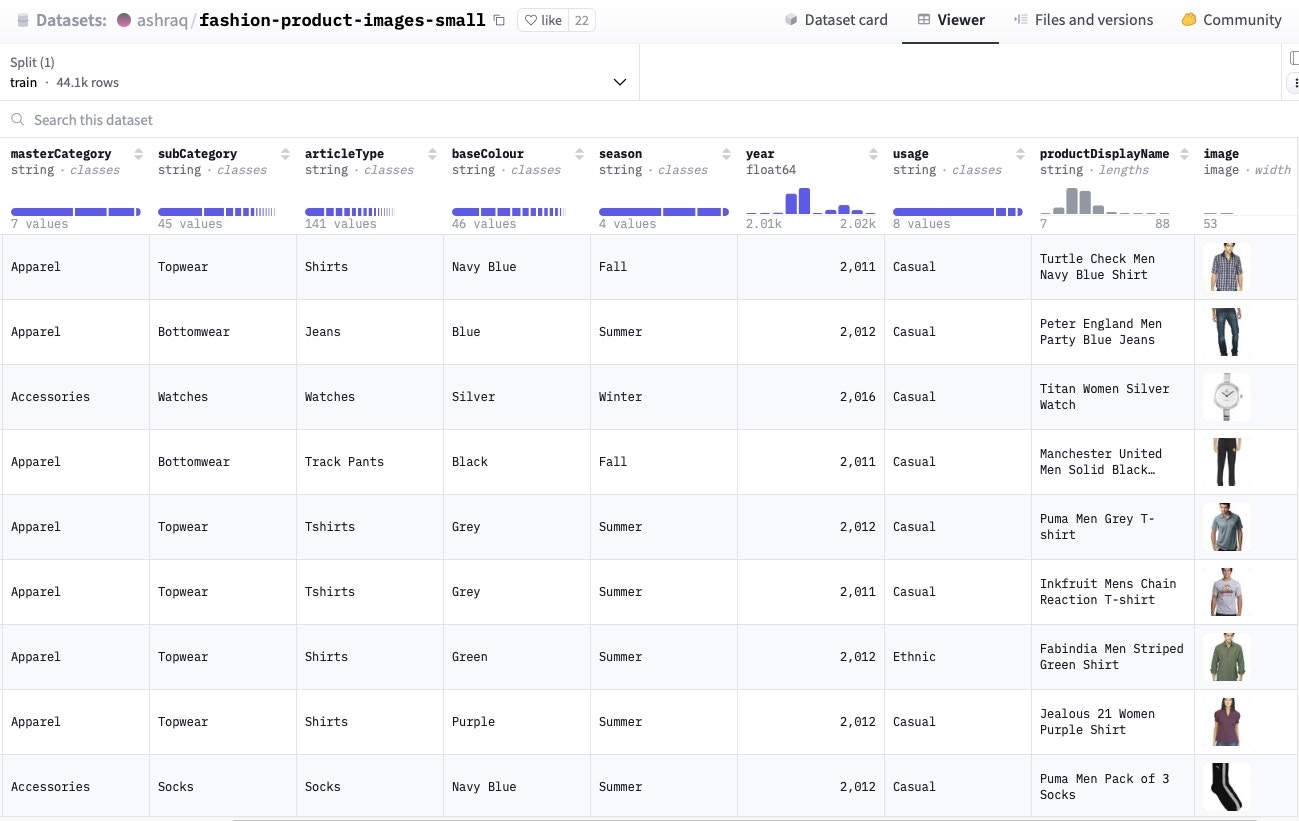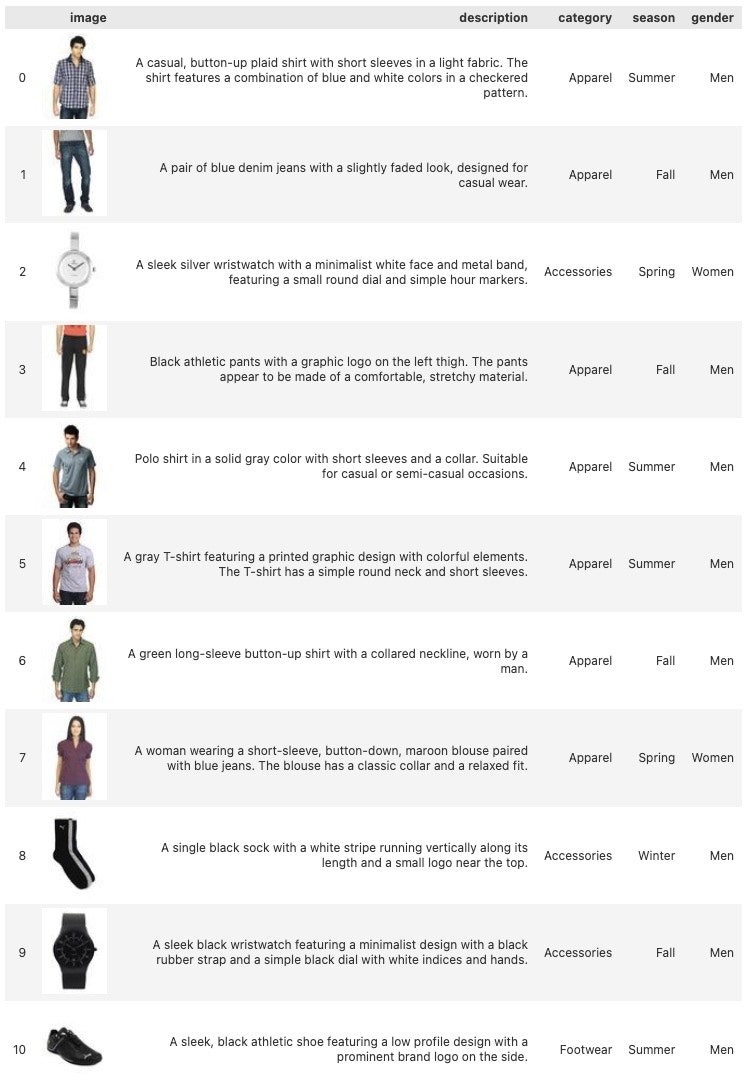Cataloging Product Images
Let’s look at a product cataloging example to see howvlm-1 can be used to generate structured data from images. In this example, we’ll use vlm-1 to generate captions, tags, and descriptions for a set of images of different products. This structured data can then be used to create a product catalog that can be searched, filtered, and analyzed in various ways.
For this example, we’re going to use a small fashion dataset ashraq/fashion-product-images-small

Preview of the 'fashion-product-images-small' dataset from Huggingface.
1. Define a custom schema for cataloging
In the sections below, we’ll showcase a few notable features of the API for image cataloging.vlm-1 can automatically generate descriptions for products based on the images provided. This can be useful for creating detailed product listings, search results, or other content that requires structured descriptions of products. First let’s create a custom schema that will be used to generate the descriptions.
2. Extract cataloging information from images
Once you have defined your custom schema, you can usevlm-1 to extract product cataloging information directly from images that conform to this schema. The extracted data will be validated against the schema you defined, ensuring that it conforms to the expected structure and types.
We support querying the API via RESTful endpoints, or using the OpenAI Python SDK with our OpenAI-Compatible API.
Example Product Cataloging Prediction
Let’s take a look at the sample output from the API for the first image of a navy plaid shirt in the product catalog. The API is able to generate a detailed description of the product, including the category, season, and gender it is intended for. This structured data can be used to create a product listing or search results for the product.- Description (
CaptioningorDescription Generation): Here, the API has generated a detailed description of the product, including the type of shirt, its features, and the colors and patterns it has. This can be useful for creating detailed product listings or search results for the product. This is a typical use-case for theCaptioningorDescription Generationtask. - Category (
ClassificationorTagging): The API has also identified the category of the product as “Apparel”. This can be useful for categorizing products in a catalog or search results. This is a typical use-case for theClassificationorTaggingtask. - Season (
ClassificationorTagging): The API has identified the season the product is intended for as “Summer”. This can be useful for filtering products by season or for creating seasonal collections. This is a typical use-case for theClassificationorTaggingtask, however, the one additional feature is that we have aLiteraltype that restricts the possible values to a predefined set. - Gender (
ClassificationorTagging): The API has identified the gender the product is intended for as “Men”. This can be useful for filtering products by gender or audience. This is similar to theSeasontask, but with a different set of possible values.
Cataloging larger image catalogs
Once you have validated the output for a single image, you can scale this process to catalog larger volumes of images. You can use the same API call to generate structured data for multiple images, and then use this structured data to create a product catalog that can be searched, filtered, and analyzed in various ways. Better yet, you can also ingest the JSON directly into JSON-compatible databases like MongoDB, Elasticsearch, or even traditional SQL databases for searching over these images unlocking a wide range of semantic image-search and querying possibilities for your cataloging needs.
`vlm-1` predictions for the fashion dataset.